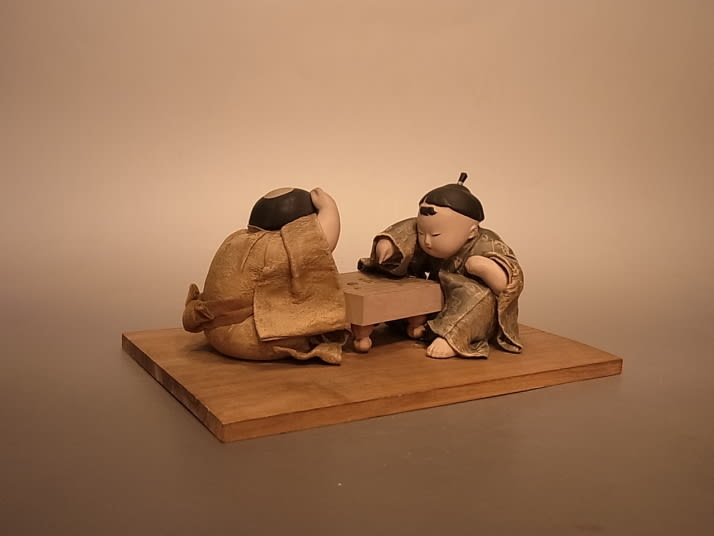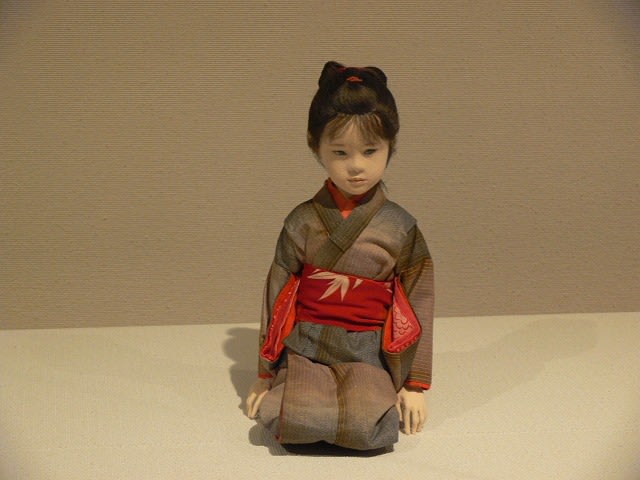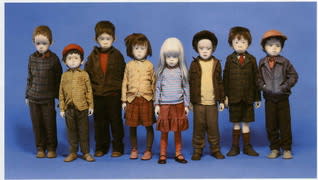http://ja.wikipedia.org/wiki/%E3%83%95%E3%83%A9%E3%82%A4%E3%83%B3%E3%82%B0%E3%83%BB%E3%82%BF%E3%82%A4%E3%82%AC%E3%83%BC%E3%82%B9
より
Flying Tigers
フライングタイガース(Flying Tigers)(中国語繁体字:飛虎隊、簡体字:飞虎队、ピン音:Fēi Hǔ Duì)は日中戦争時に中国国民党軍を支援したアメリカ合衆国義勇軍(American Volunteer Group; AVG)の愛称であるが、戦闘機(100機)やパイロットは米国政府が用意しており、実質、義勇軍の名を借りた米国の対日戦闘部隊であった。
【加瀬英明】アメリカはなぜ対日戦争を仕掛けたのか[桜H23/12/5]
Flying Tiger newsreels
http://ja.wikipedia.org/wiki/%E3%83%99%E3%83%8E%E3%83%8A
より
ベノナないしベノナ計画(英: Venona project、ただし一部機関では、VENONA と大文字表記する)は、1943年から1980年までの長期にわたって、アメリカ合衆国とイギリスの情報機関が協力して極秘裏に行ったプロジェクトである。主要任務は当時のソ連が第二次世界大戦後半に発信した暗号文を解読することであった。アメリカ合衆国とイギリスがこの作業に用いたコードネームは少なくとも13あったことが知られている。「ベノナ」はその最後のものである。「ベノナ」の意味は現在も不明。先立っては「JADE」、「BRIDE」、「DRUG」という名が使用されていた[1]。この計画に関連した日本における出版物では、ベノナをヴェノナと表記したり、解読されたファイルを指してベノナファイルと表記されることがある。
極めて高度の機密とされていたが、1995年7月に原爆研究やマンハッタン計画へのソビエトのスパイに関する文書が公開され、さらなる公開で約3000に上る解読文書が公開された。

http://srachai.blog.wox.cc/entry95.html
より
Hull note (ハルノート)
ノートというにはあまりにも小さな数行のメモ、これが日本に開戦を決断させるとは。
当時、外交戦術においてはアメリカは日本の数段先を進んでいました。
日本はとうとう痺れを切らして負け戦に引きずり込まれた訳です。
それでも4年間ほど持ちこたえた日本軍の底力は相当なものであったと推察されます。
(スラチャイ記)
cite from wikkipedia (日本語翻訳 by srachai)
Hull note
ハルノート

From Wikipedia, the free encyclopedia
無料百科事典ウィキペディアより
The Hull note or officially Outline of Proposed Basis for Agreement Between the United States and Japan was the final proposal delivered to the Empire of Japan by the United States before the attack on Pearl Harbor and the declaration of war between the two nations. The note was delivered on November 26, 1941; it is named for Secretary of State Cordell Hull.
ハルノートは日本と米国との外交関係の基本的合意事項に関する米側の案で日本のパールハーバー奇襲、引き続き行われた両国の戦闘開始宣言に先立って米国より日本帝国に提出された最後の通達となっている。
このメモ(ハルノート)は1941年11月26日に提出されているが、作成者の米国秘書官コーデルハルにちなんでその名前が刻み込まれている。
http://www.nsa.gov/public_info/declass/venona/index.shtml
より
VENONA
The U.S. Army's Signal Intelligence Service, the precursor to the National Security Agency, began a secret program in February 1943 later codenamed VENONA. The mission of this small program was to examine and exploit Soviet diplomatic communications but after the program began, the message traffic included espionage efforts as well.
Although it took almost two years before American cryptologists were able to break the KGB encryption, the information gained through these transactions provided U.S. leadership insight into Soviet intentions and treasonous activities of government employees until the program was canceled in 1980.
The VENONA files are most famous for exposing Julius (code named LIBERAL) and Ethel Rosenberg and help give indisputable evidence of their involvement with the Soviet spy ring.
The first of six public releases of translated VENONA messages was made in July 1995 and included 49 messages about the Soviets' efforts to gain information on the U.S. atomic bomb research and the Manhattan Project. Over the course of five more releases, all of the approximately 3,000 VENONA translations were made public.
Background:
背景:
The United States objected to the Second Sino-Japanese War and the occupation of part of China by Japanese troops. In protest, the United States sent support to the Nationalist government of Chiang Kai-shek. In July 1941, Japanese military units occupied southern French Indochina, violating a gentlemens' agreement. Japanese bombers quickly moved into bases in Saigon and Cambodia, from where they could attack British Malaya. As a result, immediately after the Japanese military occupation, the US government imposed trade sanctions on Japan, including the freezing of Japanese assets in the United States, and an embargo of oil exports to Japan.
米国は日本軍の(日清戦争に次ぐ)第二次日中戦争の開始と中国を部分的に占有するのを快しとしなかった。それで米国は蒋介石率いる国民党を支援していた。1941年7月、日本軍は仏領インドシナの南部を占領したが、これは各国間で結ばれている紳士協定に違反するものであった。日本軍の爆撃機はすぐに(仏領インドシナ南部の)サイゴンとカンボジアの基地に移送された。これらの基地から英領マラヤに出撃できる体制にあった。その結果、日本軍のこの(仏領インドシナ南部)占領直後に米国は日本に対して貿易禁止の措置をとった。この措置には米国内の日本の資産の差し押さえや日本に対する化石燃料の輸出禁止が盛り込まれていた。
On 5 November 1941, Emperor Hirohito approved, in Imperial Conference, the plan for the attack on Pearl Harbor. At the same time, his government made a last effort to arrive at a diplomatic solution of their differences with the United States. Ambassador Kichisabur? Nomura presented two proposals to the American government.
1941年11月5日、昭和天皇は帝国議会にて真珠湾奇襲作戦を敢行することを決定した。
同時に、この時期帝国議会は米国との意見の食い違いについて外交政策で解決する道を模索していた。
当時の米国駐在大使kitchisaburo nomuraが米国との和解に向けて米国議会に二種類の和解案を提示していた。
The first, proposal A, he presented on November 6, 1941. It proposed making a final settlement of the Sino-Japanese War with a partial withdrawal of Japanese troops. United States military intelligence had deciphered some of Japan's diplomatic codes, so they knew that there was a second, follow-up proposal in case proposal A failed. The United States government stalled and then rejected proposal A on November 14, 1941.
第一の提案、提案Aは1941年11月6日に米国議会に提出された。侵攻中の中国からの日本軍の部分的撤退がその和解案には記されていた。当時の米国軍事示唆機関は外交文書に固有の印を見破っていた。それで彼らはこの和解案Aが受け入れられないときには次の和解案Bの提示があるのを見破っていた。米国議会は和解案Aへの返事を引き延ばしやがて拒否することになった。1941年11月14日のことだ。
On November 20, 1941, Nomura presented proposal B, which proposed that Japan stop further military action in return for one million gallons (3,800 m3) of aviation fuel from the United States. The United States was about to make a counteroffer to this plan which included a monthly supply of fuel for civilian use. However, President Franklin D. Roosevelt received a leak of Japan's war plan and news that Japanese troopships were on their way to Indochina. He decided the Japanese were not being sincere in their negotiations and instructed Secretary Hull to drop the counter-proposal.
1941年11月20日、nomura大使は和解案Bを提出した。和解案Bには米国からの飛行機の燃料100万ガロン (3,800 m3) 相当の日本への輸出を条件としてさらなる軍事活動を停止する旨が記されていた。
そのとき米国では和解案Bに対する返答をしたためているところであった。この返答には民間使用を目的とする化石燃料の日本への輸出月間スケジュールが記載されていた。ところが、当時の米国大統領フランクリンルーズベルトは別ルートで日本政府の戦争の計画とインドネシアに向けて日本軍が侵攻している情報を得てしまった。大統領は日本との一連の和解交渉の過程で日本が誠実でないことを見破って、秘書官のHull氏に和解案Bに対する回答をしたためるように以来した。こうして出来上がったのがHull Noteである。
The note:
ハルノート:
On November 25 Henry L. Stimson, United States Secretary of War noted in his diary that he had discussed with US President Franklin D. Roosevelt the severe likelihood that Japan was about to launch a surprise attack, and that the question had been "how we should maneuver them [the Japanese] into the position of firing the first shot without allowing too much danger to ourselves.'"
1941年11月25日、米国の戦争担当大臣ヘンリースチムソンは彼の日記の中にこう記録している。日本がまもなく米国に対する奇襲攻撃をかけてくることをルーズベルト大統領に伝えた。「問題はどうやって日本に最初の攻撃を誘発させるのか、願わくは我方に最小の被害で。」
On the following day, November 26, 1941, Hull presented the Japanese ambassador with the Hull note, which as one of its conditions demanded the complete withdrawal of all Japanese troops from French Indochina and China. It did not refer to Manchukuo, in which hundreds of thousands of Japanese civilians were already living. Japanese Prime Minister Tojo Hideki said to his cabinet, "this is an ultimatum."
次の日1949年11月26日、ハル氏は駐米日本大使にハルノートと呼ばれるメモを手渡した。ハルノートには日本軍のインドシナ半島と中国からの完全撤退が条件の一つとして明記されていた。だが、満州国については何も条件が示されていなかった。当時満州国には数十万人の日本の民間人が入植して生活していた。日本国首相、東条英機は、このハルノートに記載されている事項は米国からの最終通告であると帝国議会で述べた。
The strike force which attacked Pearl Harbor had set sail the day before, on the morning of November 26, 1941, Japan time. It could have been recalled along the way, but no further diplomatic progress was made and on 1 December, Emperor Hirohito approved, in Imperial Conference, the war against United States, Britain, and the Netherlands, which began by the attack on Pearl Harbor, Malaya, and the Philippines.
日本軍による真珠湾奇襲艦隊は帝国議会の開催日の前日(日本時間1949年11月26日早朝)には日本を出発していた。途中で引き返すよう指示することもできたはずだがそうはしなかった。それから(ハルノート受諾日)より目立った外交上の進捗はまったくなかった。そして1949年12月1日、昭和天皇が帝国議会で米国、英国、オランダに対する宣戦布告を許諾した。それから直ちに真珠湾、マラヤ、フィリピンの攻撃を開始した。
Jonathan Daniels, President Roosevelt's administrative assistant at the time, noted Roosevelt's subsequent reaction to the Japanese attack on Pearl Harbor - "The blow was heavier than he had hoped it would necessarily be. ... But the risks paid off; even the loss was worth the price. ..."
当時ルーズベルト大統領の顧問をしていたジョナサンダニエル氏は次のように記録している。日本軍の真珠湾攻撃に対する報復に関して次のように記録している。「日本軍の真珠湾奇襲攻撃による損害はルーズベルト大統領の予想をはるかに超えるものではあった。この償いは日本にしてもらう、今回米国が真珠湾奇襲攻撃で受けた被害にみあうほどに。」
Some modern Japanese commentators say the note was designed to draw Japan into war and thus claim Japan was not the aggressor nation in the Pacific War. Toshio Tamogami, who was the Japan Air Self-Defense Force chief of staff, was sacked by the Japanese government in 2008 for taking this position.
日本の記者の中にはハルノートは日本を戦争に引き込むために意図的に作成された、それで太平洋戦争の中では日本はアジアの侵略国としては描かれていない(アメリカが意図的に引きずり込んだので)と主張している。
航空自衛隊の士官Toshio Tamogamiは2008年に日本政府によりこの問題で罷免されている。
http://ja.wikipedia.org/wiki/%E3%83%8F%E3%83%AB%E3%83%BB%E3%83%8E%E3%83%BC%E3%83%88
より
ハル・ノート(Hull note)は、太平洋戦争開戦直前の日米交渉において、1941年11月26日にアメリカ側から日本側に提示された交渉文書である。正式にはアメリカ合衆国と日本国の間の協定で提案された基礎の概要(Outline of Proposed Basis for Agreement Between the United States and Japan、日米協定基礎概要案)と称する。
日米交渉のアメリカ側の当事者であったコーデル・ハル国務長官の名前からこのように呼ばれている。ハル・ノートに関しては、「(事実上の)最後通牒であった」とする解釈と、「最後通牒ではない」とする解釈とがある
ハル・ノートは、日米交渉において日本側の当事者野村吉三郎駐米大使と来栖三郎特命大使が提示した日本側の最終打開案(乙案)に対する拒否の回答と同時に、アメリカ側から提示された交渉案である。その内容は、アメリカが日本とイギリス、中国、日本、オランダ、ソ連、タイ、およびアメリカ合衆国の包括的な不可侵条約を提案する代わりに、日本が日露戦争以降に東アジアで築いた権益と領土、軍事同盟の全てを直ちに放棄することを求めるものである。と、当時は解釈され伝えられた。概要は以下の10項目からなる。
アメリカと日本は、英中日蘭蘇泰米間の包括的な不可侵条約を提案する
日本の仏印(フランス領インドシナ)からの撤兵
日本の支那(中国)からの撤兵
日米が(日本が支援していた汪兆銘政権を否認して)アメリカの支援する中国国民党政府以外のいかなる政府を認めない
[日本] 英国または諸国の中国大陸における海外租界と関連権益を含む1901年北京議定書に関する治外法権の放棄について諸国の合意を得るための両国の努力
通商条約再締結のための交渉の開始
アメリカによる日本の資産凍結を解除、日本によるアメリカ資産の凍結の解除
円ドル為替レート安定に関する協定締結と通貨基金の設立
第三国との太平洋地域における平和維持に反する協定の廃棄 - 日独伊三国軍事同盟の廃棄を含意する、と日本側は捉えていたようである。
本協定内容の両国による推進
ウィキソースにハル・ノートの原文があります。
原文の和訳はウィキソース参照。英語原文は英語版ウィキペディア「Hull note」のページを参照

「私が危険人物のタモガミです」田母神元幕僚長記者会見1/4
「白人国家が有色人種を侵略してきた」田母神元幕僚長記者会見2/4
タモガミ謀略史観の全容! 田母神元幕僚長記者会見3/4
「日本はいい国だと言ったらクビになった」田母神元幕僚長記者会見4/4
http://www.geocities.jp/torikai007/japanchina/avg.html
参考

http://ja.wikipedia.org/wiki/%E3%83%8F%E3%83%AA%E3%83%BC%E3%83%BB%E3%83%9B%E3%83%AF%E3%82%A4%E3%83%88
より
ハリー・デクスター・ホワイト(Harry Dexter White,1892年10月9日 – 1948年8月16日)は、アメリカ合衆国の官僚。フランクリン・ルーズベルト政権のヘンリー・モーゲンソー財務長官のもとで財務次官補をつとめた。
「コミンテルンのスパイ」説
一部の論者は、ホワイトをソ連コミンテルンのスパイであると主張している。それによれば、次のような「事実」があったという。
1941年、ルーズベルト大統領時代のアメリカ合衆国の財務次官補としてハル・ノートの草案作成に携わった。この頃、ソ連の工作員と接触し「スノウ(snow)作戦」(ホワイトの名による)という工作に関係したとされる。
スノウ作戦の際、ソ連スパイのイサク・アブドゥロービッチ・アフメロフ(Iskhak Abdulovich Akhmerov)がホワイトと接触した後、ビタリー・グリゴリエッチ・パブロフはアフメロフの友人としてホワイトに接触、メモを見せたという[8]。ホワイトの関与については次のような諸説がある。
パブロフの証言からスパイとする説[9]
パブロフの証言からスパイではなかったとする説[10]
機密文書に依拠する諸説
ホワイトをコミンテルンのスパイであると主張する論者は、ベノナ文書[11]で彼がソ連のスパイであったことが確認されたとも主張している。
ホワイトはGRU(ソ連赤軍参謀本部情報総局)の在米責任者ボリス・バイコフ(Boris Bykov、Boris Bukov)大佐指揮下の工作員の一人であったが、後にその所属はGRUからNKGB(国家保安人民委員部、KGBの前身)に移管されたという。1953年11月6日、ハーバード・ブラウネル司法長官は彼を名指しで、ソ連のスパイであり、米国の機密文書をモスクワに渡すために他の秘密工作員(連絡要員)に渡していた、と述べている。




ジム ロジャース 米国連銀、国際通貨基金, 世界銀行 制度疲労 全部潰せ
より
Flying Tigers
フライングタイガース(Flying Tigers)(中国語繁体字:飛虎隊、簡体字:飞虎队、ピン音:Fēi Hǔ Duì)は日中戦争時に中国国民党軍を支援したアメリカ合衆国義勇軍(American Volunteer Group; AVG)の愛称であるが、戦闘機(100機)やパイロットは米国政府が用意しており、実質、義勇軍の名を借りた米国の対日戦闘部隊であった。
【加瀬英明】アメリカはなぜ対日戦争を仕掛けたのか[桜H23/12/5]
Flying Tiger newsreels
http://ja.wikipedia.org/wiki/%E3%83%99%E3%83%8E%E3%83%8A
より
ベノナないしベノナ計画(英: Venona project、ただし一部機関では、VENONA と大文字表記する)は、1943年から1980年までの長期にわたって、アメリカ合衆国とイギリスの情報機関が協力して極秘裏に行ったプロジェクトである。主要任務は当時のソ連が第二次世界大戦後半に発信した暗号文を解読することであった。アメリカ合衆国とイギリスがこの作業に用いたコードネームは少なくとも13あったことが知られている。「ベノナ」はその最後のものである。「ベノナ」の意味は現在も不明。先立っては「JADE」、「BRIDE」、「DRUG」という名が使用されていた[1]。この計画に関連した日本における出版物では、ベノナをヴェノナと表記したり、解読されたファイルを指してベノナファイルと表記されることがある。
極めて高度の機密とされていたが、1995年7月に原爆研究やマンハッタン計画へのソビエトのスパイに関する文書が公開され、さらなる公開で約3000に上る解読文書が公開された。

http://srachai.blog.wox.cc/entry95.html
より
Hull note (ハルノート)
ノートというにはあまりにも小さな数行のメモ、これが日本に開戦を決断させるとは。
当時、外交戦術においてはアメリカは日本の数段先を進んでいました。
日本はとうとう痺れを切らして負け戦に引きずり込まれた訳です。
それでも4年間ほど持ちこたえた日本軍の底力は相当なものであったと推察されます。
(スラチャイ記)
cite from wikkipedia (日本語翻訳 by srachai)
Hull note
ハルノート

From Wikipedia, the free encyclopedia
無料百科事典ウィキペディアより
The Hull note or officially Outline of Proposed Basis for Agreement Between the United States and Japan was the final proposal delivered to the Empire of Japan by the United States before the attack on Pearl Harbor and the declaration of war between the two nations. The note was delivered on November 26, 1941; it is named for Secretary of State Cordell Hull.
ハルノートは日本と米国との外交関係の基本的合意事項に関する米側の案で日本のパールハーバー奇襲、引き続き行われた両国の戦闘開始宣言に先立って米国より日本帝国に提出された最後の通達となっている。
このメモ(ハルノート)は1941年11月26日に提出されているが、作成者の米国秘書官コーデルハルにちなんでその名前が刻み込まれている。
http://www.nsa.gov/public_info/declass/venona/index.shtml
より
VENONA
The U.S. Army's Signal Intelligence Service, the precursor to the National Security Agency, began a secret program in February 1943 later codenamed VENONA. The mission of this small program was to examine and exploit Soviet diplomatic communications but after the program began, the message traffic included espionage efforts as well.
Although it took almost two years before American cryptologists were able to break the KGB encryption, the information gained through these transactions provided U.S. leadership insight into Soviet intentions and treasonous activities of government employees until the program was canceled in 1980.
The VENONA files are most famous for exposing Julius (code named LIBERAL) and Ethel Rosenberg and help give indisputable evidence of their involvement with the Soviet spy ring.
The first of six public releases of translated VENONA messages was made in July 1995 and included 49 messages about the Soviets' efforts to gain information on the U.S. atomic bomb research and the Manhattan Project. Over the course of five more releases, all of the approximately 3,000 VENONA translations were made public.
Background:
背景:
The United States objected to the Second Sino-Japanese War and the occupation of part of China by Japanese troops. In protest, the United States sent support to the Nationalist government of Chiang Kai-shek. In July 1941, Japanese military units occupied southern French Indochina, violating a gentlemens' agreement. Japanese bombers quickly moved into bases in Saigon and Cambodia, from where they could attack British Malaya. As a result, immediately after the Japanese military occupation, the US government imposed trade sanctions on Japan, including the freezing of Japanese assets in the United States, and an embargo of oil exports to Japan.
米国は日本軍の(日清戦争に次ぐ)第二次日中戦争の開始と中国を部分的に占有するのを快しとしなかった。それで米国は蒋介石率いる国民党を支援していた。1941年7月、日本軍は仏領インドシナの南部を占領したが、これは各国間で結ばれている紳士協定に違反するものであった。日本軍の爆撃機はすぐに(仏領インドシナ南部の)サイゴンとカンボジアの基地に移送された。これらの基地から英領マラヤに出撃できる体制にあった。その結果、日本軍のこの(仏領インドシナ南部)占領直後に米国は日本に対して貿易禁止の措置をとった。この措置には米国内の日本の資産の差し押さえや日本に対する化石燃料の輸出禁止が盛り込まれていた。
On 5 November 1941, Emperor Hirohito approved, in Imperial Conference, the plan for the attack on Pearl Harbor. At the same time, his government made a last effort to arrive at a diplomatic solution of their differences with the United States. Ambassador Kichisabur? Nomura presented two proposals to the American government.
1941年11月5日、昭和天皇は帝国議会にて真珠湾奇襲作戦を敢行することを決定した。
同時に、この時期帝国議会は米国との意見の食い違いについて外交政策で解決する道を模索していた。
当時の米国駐在大使kitchisaburo nomuraが米国との和解に向けて米国議会に二種類の和解案を提示していた。
The first, proposal A, he presented on November 6, 1941. It proposed making a final settlement of the Sino-Japanese War with a partial withdrawal of Japanese troops. United States military intelligence had deciphered some of Japan's diplomatic codes, so they knew that there was a second, follow-up proposal in case proposal A failed. The United States government stalled and then rejected proposal A on November 14, 1941.
第一の提案、提案Aは1941年11月6日に米国議会に提出された。侵攻中の中国からの日本軍の部分的撤退がその和解案には記されていた。当時の米国軍事示唆機関は外交文書に固有の印を見破っていた。それで彼らはこの和解案Aが受け入れられないときには次の和解案Bの提示があるのを見破っていた。米国議会は和解案Aへの返事を引き延ばしやがて拒否することになった。1941年11月14日のことだ。
On November 20, 1941, Nomura presented proposal B, which proposed that Japan stop further military action in return for one million gallons (3,800 m3) of aviation fuel from the United States. The United States was about to make a counteroffer to this plan which included a monthly supply of fuel for civilian use. However, President Franklin D. Roosevelt received a leak of Japan's war plan and news that Japanese troopships were on their way to Indochina. He decided the Japanese were not being sincere in their negotiations and instructed Secretary Hull to drop the counter-proposal.
1941年11月20日、nomura大使は和解案Bを提出した。和解案Bには米国からの飛行機の燃料100万ガロン (3,800 m3) 相当の日本への輸出を条件としてさらなる軍事活動を停止する旨が記されていた。
そのとき米国では和解案Bに対する返答をしたためているところであった。この返答には民間使用を目的とする化石燃料の日本への輸出月間スケジュールが記載されていた。ところが、当時の米国大統領フランクリンルーズベルトは別ルートで日本政府の戦争の計画とインドネシアに向けて日本軍が侵攻している情報を得てしまった。大統領は日本との一連の和解交渉の過程で日本が誠実でないことを見破って、秘書官のHull氏に和解案Bに対する回答をしたためるように以来した。こうして出来上がったのがHull Noteである。
The note:
ハルノート:
On November 25 Henry L. Stimson, United States Secretary of War noted in his diary that he had discussed with US President Franklin D. Roosevelt the severe likelihood that Japan was about to launch a surprise attack, and that the question had been "how we should maneuver them [the Japanese] into the position of firing the first shot without allowing too much danger to ourselves.'"
1941年11月25日、米国の戦争担当大臣ヘンリースチムソンは彼の日記の中にこう記録している。日本がまもなく米国に対する奇襲攻撃をかけてくることをルーズベルト大統領に伝えた。「問題はどうやって日本に最初の攻撃を誘発させるのか、願わくは我方に最小の被害で。」
On the following day, November 26, 1941, Hull presented the Japanese ambassador with the Hull note, which as one of its conditions demanded the complete withdrawal of all Japanese troops from French Indochina and China. It did not refer to Manchukuo, in which hundreds of thousands of Japanese civilians were already living. Japanese Prime Minister Tojo Hideki said to his cabinet, "this is an ultimatum."
次の日1949年11月26日、ハル氏は駐米日本大使にハルノートと呼ばれるメモを手渡した。ハルノートには日本軍のインドシナ半島と中国からの完全撤退が条件の一つとして明記されていた。だが、満州国については何も条件が示されていなかった。当時満州国には数十万人の日本の民間人が入植して生活していた。日本国首相、東条英機は、このハルノートに記載されている事項は米国からの最終通告であると帝国議会で述べた。
The strike force which attacked Pearl Harbor had set sail the day before, on the morning of November 26, 1941, Japan time. It could have been recalled along the way, but no further diplomatic progress was made and on 1 December, Emperor Hirohito approved, in Imperial Conference, the war against United States, Britain, and the Netherlands, which began by the attack on Pearl Harbor, Malaya, and the Philippines.
日本軍による真珠湾奇襲艦隊は帝国議会の開催日の前日(日本時間1949年11月26日早朝)には日本を出発していた。途中で引き返すよう指示することもできたはずだがそうはしなかった。それから(ハルノート受諾日)より目立った外交上の進捗はまったくなかった。そして1949年12月1日、昭和天皇が帝国議会で米国、英国、オランダに対する宣戦布告を許諾した。それから直ちに真珠湾、マラヤ、フィリピンの攻撃を開始した。
Jonathan Daniels, President Roosevelt's administrative assistant at the time, noted Roosevelt's subsequent reaction to the Japanese attack on Pearl Harbor - "The blow was heavier than he had hoped it would necessarily be. ... But the risks paid off; even the loss was worth the price. ..."
当時ルーズベルト大統領の顧問をしていたジョナサンダニエル氏は次のように記録している。日本軍の真珠湾攻撃に対する報復に関して次のように記録している。「日本軍の真珠湾奇襲攻撃による損害はルーズベルト大統領の予想をはるかに超えるものではあった。この償いは日本にしてもらう、今回米国が真珠湾奇襲攻撃で受けた被害にみあうほどに。」
Some modern Japanese commentators say the note was designed to draw Japan into war and thus claim Japan was not the aggressor nation in the Pacific War. Toshio Tamogami, who was the Japan Air Self-Defense Force chief of staff, was sacked by the Japanese government in 2008 for taking this position.
日本の記者の中にはハルノートは日本を戦争に引き込むために意図的に作成された、それで太平洋戦争の中では日本はアジアの侵略国としては描かれていない(アメリカが意図的に引きずり込んだので)と主張している。
航空自衛隊の士官Toshio Tamogamiは2008年に日本政府によりこの問題で罷免されている。
http://ja.wikipedia.org/wiki/%E3%83%8F%E3%83%AB%E3%83%BB%E3%83%8E%E3%83%BC%E3%83%88
より
ハル・ノート(Hull note)は、太平洋戦争開戦直前の日米交渉において、1941年11月26日にアメリカ側から日本側に提示された交渉文書である。正式にはアメリカ合衆国と日本国の間の協定で提案された基礎の概要(Outline of Proposed Basis for Agreement Between the United States and Japan、日米協定基礎概要案)と称する。
日米交渉のアメリカ側の当事者であったコーデル・ハル国務長官の名前からこのように呼ばれている。ハル・ノートに関しては、「(事実上の)最後通牒であった」とする解釈と、「最後通牒ではない」とする解釈とがある
ハル・ノートは、日米交渉において日本側の当事者野村吉三郎駐米大使と来栖三郎特命大使が提示した日本側の最終打開案(乙案)に対する拒否の回答と同時に、アメリカ側から提示された交渉案である。その内容は、アメリカが日本とイギリス、中国、日本、オランダ、ソ連、タイ、およびアメリカ合衆国の包括的な不可侵条約を提案する代わりに、日本が日露戦争以降に東アジアで築いた権益と領土、軍事同盟の全てを直ちに放棄することを求めるものである。と、当時は解釈され伝えられた。概要は以下の10項目からなる。
アメリカと日本は、英中日蘭蘇泰米間の包括的な不可侵条約を提案する
日本の仏印(フランス領インドシナ)からの撤兵
日本の支那(中国)からの撤兵
日米が(日本が支援していた汪兆銘政権を否認して)アメリカの支援する中国国民党政府以外のいかなる政府を認めない
[日本] 英国または諸国の中国大陸における海外租界と関連権益を含む1901年北京議定書に関する治外法権の放棄について諸国の合意を得るための両国の努力
通商条約再締結のための交渉の開始
アメリカによる日本の資産凍結を解除、日本によるアメリカ資産の凍結の解除
円ドル為替レート安定に関する協定締結と通貨基金の設立
第三国との太平洋地域における平和維持に反する協定の廃棄 - 日独伊三国軍事同盟の廃棄を含意する、と日本側は捉えていたようである。
本協定内容の両国による推進
ウィキソースにハル・ノートの原文があります。
原文の和訳はウィキソース参照。英語原文は英語版ウィキペディア「Hull note」のページを参照

「私が危険人物のタモガミです」田母神元幕僚長記者会見1/4
「白人国家が有色人種を侵略してきた」田母神元幕僚長記者会見2/4
タモガミ謀略史観の全容! 田母神元幕僚長記者会見3/4
「日本はいい国だと言ったらクビになった」田母神元幕僚長記者会見4/4
http://www.geocities.jp/torikai007/japanchina/avg.html
参考

http://ja.wikipedia.org/wiki/%E3%83%8F%E3%83%AA%E3%83%BC%E3%83%BB%E3%83%9B%E3%83%AF%E3%82%A4%E3%83%88
より
ハリー・デクスター・ホワイト(Harry Dexter White,1892年10月9日 – 1948年8月16日)は、アメリカ合衆国の官僚。フランクリン・ルーズベルト政権のヘンリー・モーゲンソー財務長官のもとで財務次官補をつとめた。
「コミンテルンのスパイ」説
一部の論者は、ホワイトをソ連コミンテルンのスパイであると主張している。それによれば、次のような「事実」があったという。
1941年、ルーズベルト大統領時代のアメリカ合衆国の財務次官補としてハル・ノートの草案作成に携わった。この頃、ソ連の工作員と接触し「スノウ(snow)作戦」(ホワイトの名による)という工作に関係したとされる。
スノウ作戦の際、ソ連スパイのイサク・アブドゥロービッチ・アフメロフ(Iskhak Abdulovich Akhmerov)がホワイトと接触した後、ビタリー・グリゴリエッチ・パブロフはアフメロフの友人としてホワイトに接触、メモを見せたという[8]。ホワイトの関与については次のような諸説がある。
パブロフの証言からスパイとする説[9]
パブロフの証言からスパイではなかったとする説[10]
機密文書に依拠する諸説
ホワイトをコミンテルンのスパイであると主張する論者は、ベノナ文書[11]で彼がソ連のスパイであったことが確認されたとも主張している。
ホワイトはGRU(ソ連赤軍参謀本部情報総局)の在米責任者ボリス・バイコフ(Boris Bykov、Boris Bukov)大佐指揮下の工作員の一人であったが、後にその所属はGRUからNKGB(国家保安人民委員部、KGBの前身)に移管されたという。1953年11月6日、ハーバード・ブラウネル司法長官は彼を名指しで、ソ連のスパイであり、米国の機密文書をモスクワに渡すために他の秘密工作員(連絡要員)に渡していた、と述べている。




ジム ロジャース 米国連銀、国際通貨基金, 世界銀行 制度疲労 全部潰せ


































































